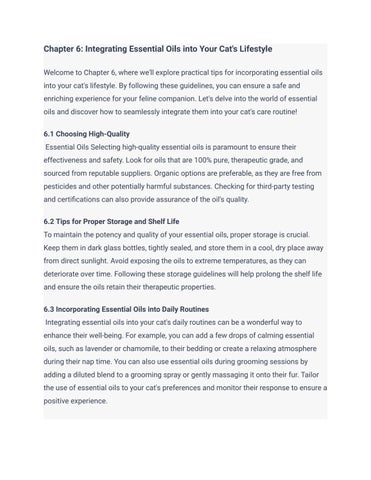Essential Oils for Cat Wellness"
Table of Contents:
Chapter 1 - Understanding Essential Oils and Their Benefits for Feline Health
Chapter 2: Essential Oils and Cat Care
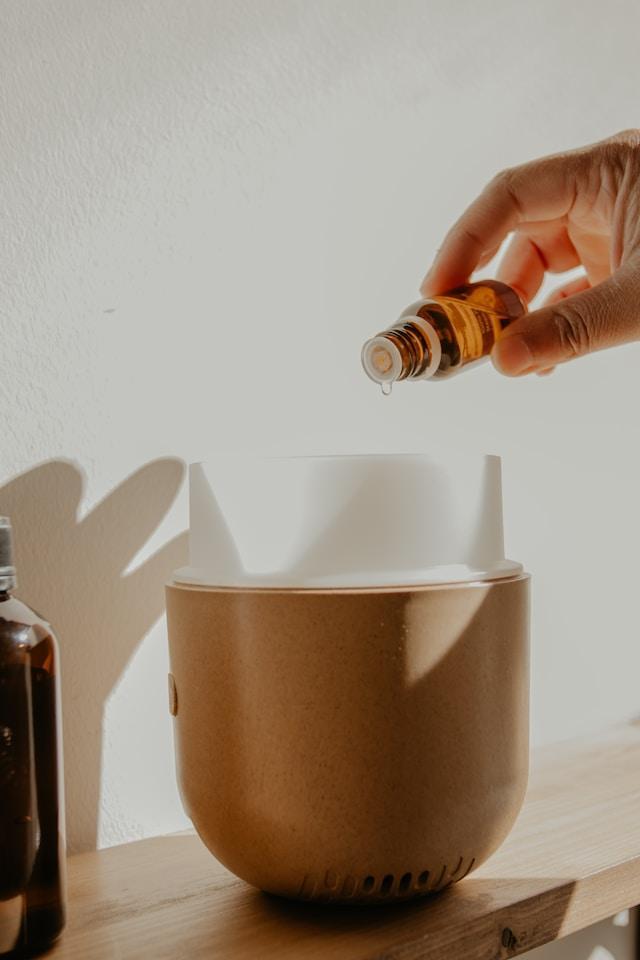
Chapter 3: Essential Oils for Common Feline Ailments
Chapter 4: Aromatherapy Techniques for Cats
Chapter 5: Essential Oils to Avoid and Potential Hazards
Chapter 6: Integrating Essential Oils into Your Cat's Lifestyle
Chapter 7: Essential Oils That Are Toxic to Cats
Chapter 8 - Essential Oil Recipes
Chapter 9 - Common Questions and Answers on Using Essential Oils with Cats
Conclusion
References
Glossary of Terms
Copyright Page
All rights reserved. No part of this book may be reproduced, stored in a retrieval system, or transmitted, in any form or by any means, electronic, mechanical, photocopying, recording, or otherwise, without prior written permission from the publishers, except for brief quotations used in reviews or critical articles.
This book is intended for educational purposes only and is not a substitute for professional veterinary advice. The information provided in this book is based on research, general knowledge, and the authors' experiences up to the date of publication. However, medical knowledge is constantly evolving, and new information may emerge
that could affect the accuracy of the content. The authors, publishers, and contributors of this book cannot be held responsible for any errors or omissions or for any consequences arising from the use of the information provided.
Every effort has been made to ensure the accuracy of the information presented in this book. However, the authors, publishers, and contributors do not assume any responsibility for errors, inaccuracies, or omissions. The information in this book is provided as is, and no warranty, expressed or implied, is made regarding its content, completeness, or reliability.
Trademarks and product names mentioned within this book are the property of their respective owners. The mention of specific products, services, or organizations does not imply endorsement or recommendation by the authors, publishers, or contributors.
©2023 Kristina GrantMedical Disclaimer
The information provided in this book is for educational purposes only and is not intended as a substitute for professional veterinary advice, diagnosis, or treatment. Always seek the advice of a veterinarian or qualified animal healthcare professional regarding any questions or concerns you may have about your cat's health or the use of essential oils.
The content of this book is based on general knowledge and research available up to the date of its publication. However, medical knowledge is constantly evolving, and new information may emerge that could affect the accuracy of the content. Therefore, the authors, publishers, and contributors of this book cannot guarantee the accuracy, completeness, or timeliness of the information provided.
The use of essential oils with cats carries inherent risks and should be approached with caution. Cats have unique physiological characteristics and can be more sensitive to
certain substances, including essential oils, compared to other animals or humans. Some essential oils can be toxic or cause adverse reactions in cats. It is essential to consult with a veterinarian or qualified animal healthcare professional before using essential oils with your cat, especially if your cat has any pre-existing medical conditions or is on medication.
Individual cats may react differently to essential oils, and what works well for one cat may not work for another It is important to monitor your cat closely for any signs of discomfort, irritation, or adverse reactions when using essential oils. Discontinue use immediately if any negative symptoms occur and seek veterinary advice.
The authors, publishers, and contributors of this book disclaim any liability for any loss, injury, or damage incurred as a direct or indirect consequence of the application or interpretation of the information presented in this book.
By reading this book, you acknowledge and accept that the responsibility for the use of essential oils with your cat rests solely with you, and you agree to consult with a veterinarian or qualified animal healthcare professional for personalized guidance and advice.
Remember, the health and well-being of your cat are of utmost importance, and professional veterinary care should always be sought when needed.
Please consult with a veterinarian or qualified animal healthcare professional for any specific questions or concerns regarding your cat's health or the use of essential oils.
TELEMEDICINE FOR PETS
Get fast, affordable vet care at home
Unlimited video appointments with vet of your choice
Live chat for pet nutrition, health and urgent advice
Access to prescription and non prescription medication
Instant access to medical records
Predictable pricing making pet care costs accessible and stress free
Learn More
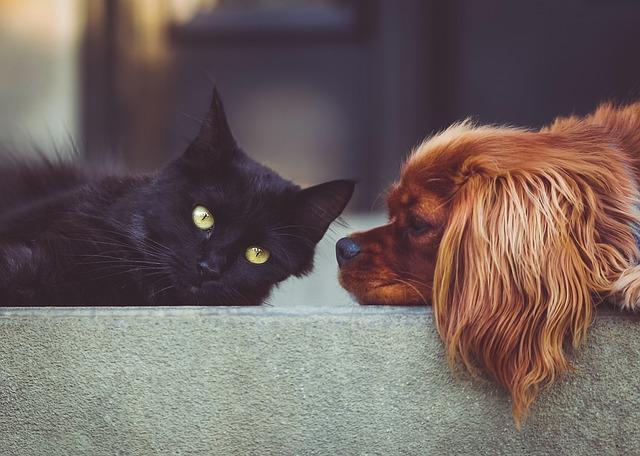
Introduction: The Healing Power of Essential Oils for Cats
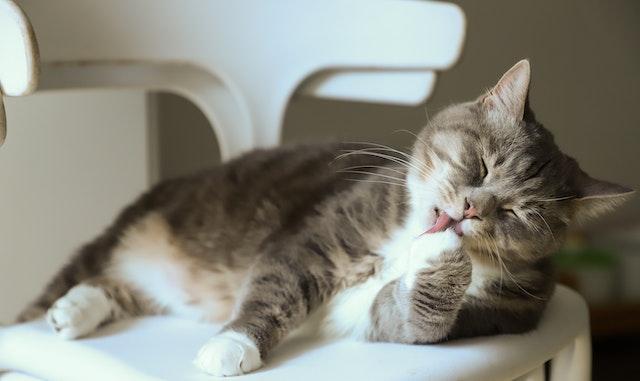
Welcome to the wonderful world of essential oils and their incredible benefits for our beloved feline friends! If you're a cat lover like us, you probably want nothing but the best for your precious companion. And that's exactly why we've created this book – to guide you on a journey of using essential oils to enhance your cat's health and well-being.
Cats are more than just pets; they are cherished members of our families. We understand how important it is to provide them with gentle, natural solutions that promote their overall health and happiness. Essential oils offer a holistic approach to feline care, harnessing the power of nature to support their physical, emotional, and mental well-being.
In this book, we'll delve into the world of essential oils and explore how they can benefit your cat's life. We'll start by understanding the basics: what essential oils are, how they work, and the potential advantages they hold for our feline companions. Safety is paramount, so we'll also cover important considerations to ensure the well-being of your cat throughout your essential oil journey.
From there, we'll dive into specific applications of essential oils in cat care. Whether it's maintaining a fresh-smelling environment, enhancing grooming routines, supporting respiratory health, or alleviating stress and anxiety, we've got you covered. We'll also explore how essential oils can aid in addressing common feline ailments, such as digestive issues, immunity support, joint discomfort, and skin conditions.
We understand that introducing essential oils to your cat's life might feel unfamiliar or even daunting at first. That's why we'll provide you with practical aromatherapy techniques tailored to cats, including inhalation methods, topical applications, and safe diffusing practices. We'll guide you through creating personalized blends and help you monitor your cat's response to ensure their comfort and well-being.
Of course, as responsible pet owners, we must be aware of potential hazards and oils to avoid when it comes to our feline friends. We'll provide a comprehensive list of toxic essential oils and highlight the necessary safety guidelines to keep your cat safe. Accidents can happen, so we'll equip you with first aid measures in case of accidental exposures.
This book is designed to be your go-to resource, offering guidance on integrating essential oils into your cat's lifestyle seamlessly We'll cover topics such as choosing high-quality oils, proper storage techniques, incorporating oils into daily routines, and how essential oils can complement veterinary care. We encourage you to consult professionals for personalized advice and to work in partnership with your veterinarian.
Throughout this book, you'll find practical tips, personal stories, and valuable insights to help you on this aromatic journey Remember, every cat is unique, and what works for one might not work for another Patience and observation will be your allies as you discover the scents and blends that resonate with your feline companion. So, are you ready to embark on this fragrant adventure? Let's uncover the healing power of essential oils for cats together, nurturing their well-being and forging an even deeper bond with our furry friends. Get ready to witness the amazing benefits and the joy that essential oils can bring into your cat's life!
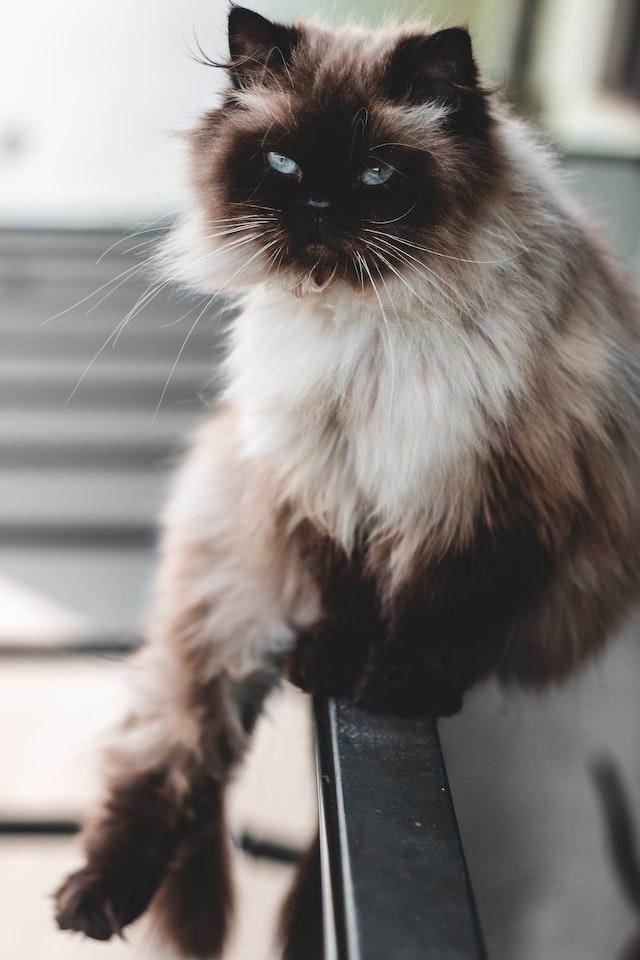
Chapter 1: Understanding Essential Oils and Their Benefits for Feline Health
Welcome to Chapter 1, where we'll dive into the fascinating world of essential oils and discover how they can work wonders for your cat's health and well-being. So grab a cozy seat, and let's embark on this aromatic adventure together!
1.1 What are Essential Oils?
Essential oils are highly concentrated, aromatic compounds derived from plants. They capture the plant's natural fragrance and therapeutic properties, which can have a profound impact on both humans and animals, including our feline companions. These oils are extracted through various methods, such as steam distillation, cold-pressing, or solvent extraction, ensuring that the potency and essence of the plant are preserved.
1.2 The Science Behind Essential Oils
It's fascinating to explore the science behind essential oils and their effects. When inhaled or applied topically, essential oils interact with our cat's olfactory system and skin, triggering physiological responses. The compounds in essential oils can affect the limbic system, which plays a vital role in emotions, behavior, and memory This explains why essential oils have the potential to influence our cats' mood and well-being.
1.3 Potential Benefits and Uses for Cats
Essential oils offer a range of potential benefits for cats. They can help promote relaxation, reduce anxiety, support respiratory health, aid in digestion, soothe skin irritations, and even boost the immune system. Each oil has its unique properties, and finding the right ones for your cat's needs can make a significant difference in their overall wellness.
1.4 Important Safety Considerations
While essential oils can offer numerous benefits, it's crucial to prioritize safety when
using them with our feline friends. Cats have a unique metabolism, and certain essential oils can be toxic to them. Always choose oils that are safe for cats and ensure proper dilution before using them. It's also essential to introduce oils gradually and observe your cat's reaction to ensure they are comfortable and not experiencing any adverse effects.
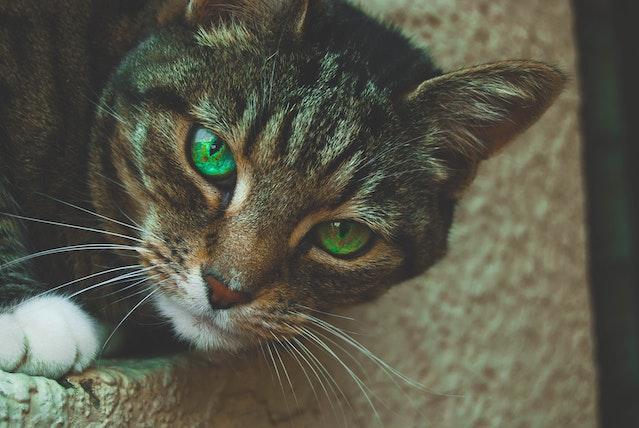
Chapter 2: Essential Oils and Cat Care
Welcome to Chapter 2, where we'll explore the exciting ways essential oils can enhance your cat's care routine. From creating a safe environment to supporting their grooming and overall well-being, we'll cover it all. So, let's dive in and discover how these aromatic wonders can benefit your feline friend!
2.1 Creating a Safe Environment for Your Cat
Ensuring a safe environment is crucial for your cat's health and happiness. Essential oils can help in this regard by naturally repelling pests like fleas, ticks, and mosquitoes. Oils such as lavender, cedarwood, and lemongrass have been known to have insect-repellent properties, keeping those pesky critters at bay. Remember to use pet-safe formulations and consult with your veterinarian for proper application methods.
2.2 Using Essential Oils for Odor Control
We all want our homes to smell fresh and pleasant, and essential oils can be a fantastic tool for odor control. They can help neutralize unpleasant odors, leaving your home smelling delightful. Oils like lemon, peppermint, and eucalyptus can be used in diffusers or homemade sprays to freshen up the air. Just ensure the oils you choose are safe for your cat and that the scents are not overwhelming for their sensitive noses.
2.3 Enhancing Cat Grooming and Skin Health
Essential oils can play a role in maintaining your cat's grooming routine and promoting healthy skin. Some oils, such as chamomile and calendula, have soothing properties that can help alleviate skin irritations. You can create gentle grooming sprays or add a few drops of these oils to a carrier oil for massage. Always perform a patch test first and observe your cat's response to ensure their comfort.
2.4 Supporting Respiratory Health in Cats
Respiratory health is crucial for your cat's overall well-being. Essential oils like eucalyptus and frankincense have been traditionally used to support respiratory health. However, it's essential to remember that cats are more sensitive to certain oils, so consult with your veterinarian before using them. Inhalation methods, such as using a diffuser or steam inhalation, can be effective in providing a supportive environment for your cat's respiratory system.
2.5 Managing Stress and Anxiety in Felines
Cats can experience stress and anxiety due to various factors, such as changes in the environment or visits to the veterinarian Essential oils like lavender and chamomile are known for their calming properties and can help create a soothing atmosphere for your cat. However, it's important to introduce these oils gradually and observe your cat's response. Every cat is unique, and what works for one may not work for another
Chapter 3: Essential Oils for Common Feline Ailments
Welcome to Chapter 3, where we'll explore the exciting ways essential oils can support your cat's health by addressing common ailments. From digestive issues to joint discomfort, we'll discover how these natural remedies can provide relief and promote your cat's well-being. So, let's dive in and learn about the potential benefits of essential oils for your feline friend!
3.1 Addressing Digestive Issues
Just like humans, cats can experience digestive issues such as nausea, bloating, and diarrhea. Essential oils such as ginger and peppermint have been traditionally used to support healthy digestion. These oils can be diluted and applied topically to the abdomen or diffused in the air to create a soothing environment. It's important to
consult with your veterinarian to ensure the appropriate oils and application methods for your cat's specific needs.
3.2 Boosting Immunity and Fighting Infections
Maintaining a strong immune system is vital for your cat's overall health. Essential oils like tea tree and oregano have antimicrobial properties that may help fight off infections and boost immunity However, it's crucial to note that cats can be more sensitive to certain oils, so consulting with your veterinarian is essential before using them. Always dilute the oils properly and use them sparingly.
3.3 Alleviating Joint and Muscle Discomfort
As cats age, they may experience joint and muscle discomfort, leading to reduced mobility and overall discomfort. Essential oils such as lavender and marjoram possess calming and soothing properties that can provide relief for your cat. Diluting these oils in a carrier oil and gently massaging them into the affected areas may offer comfort. However, it's crucial to observe your cat's response and consult with your veterinarian for proper guidance.
3.4 Promoting Healthy Coat and Skin
A shiny and healthy coat is a sign of a cat's overall well-being. Essential oils like chamomile and lavender can be beneficial for promoting healthy skin and a lustrous coat. You can create a diluted spray or add a few drops of these oils to a carrier oil for a grooming massage. However, always perform a patch test and monitor your cat's reaction to ensure they are comfortable and not experiencing any adverse effects.
3.5 Supporting Urinary Tract Health
Urinary tract issues, such as infections or discomfort, can be a common concern for cats. Essential oils like juniper berry and sandalwood have been traditionally used to support urinary tract health. However, it's crucial to approach these oils with caution and under the guidance of your veterinarian. Inhalation methods, such as diffusing, may be more appropriate for urinary tract support in cats.
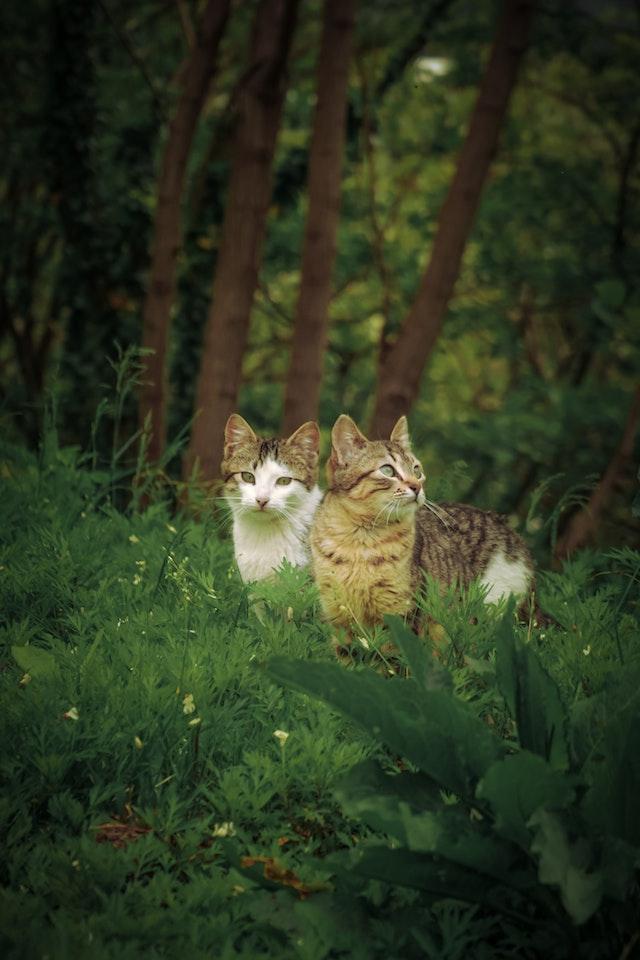
Chapter 4: Aromatherapy Techniques for Cats
Welcome to Chapter 4, where we'll explore the various aromatherapy techniques specifically tailored for our feline friends. Understanding how to safely and effectively use essential oils with cats is essential for their well-being. So, let's delve into the world of aromatherapy techniques and discover how to create a harmonious aromatic environment for your beloved cat!
4.1 Inhalation Methods for Cats
Inhalation is a gentle and effective way for cats to experience the benefits of essential oils. You can create a calming atmosphere by using a diffuser specifically designed for pets. Just remember to choose cat-safe oils and use them sparingly. Alternatively, you can create a cozy space for your cat by adding a few drops of diluted oil to a cloth or bedding in their favorite resting area. This allows them to inhale the aroma at their own pace.
4.2 Topical Applications and Dilutions
Topical application of essential oils can be beneficial for cats when done with care. It's important to always dilute essential oils in a carrier oil before applying them to your cat's skin. A safe dilution ratio is typically 1-2 drops of essential oil per ounce of carrier oil. Gentle massage on specific areas, such as the base of the tail or the paw pads, can help your cat experience the benefits. Remember to observe your cat closely and discontinue use if any signs of discomfort or adverse reactions occur
4.3 Diffusing Essential Oils
Safely Using a diffuser can create a pleasant and calming atmosphere for your cat. However, it's essential to choose a diffuser that is specifically designed for use with pets. Look for diffusers that offer a gentle and low-intensity mist. Ensure that the diffuser is placed in an area where your cat has the option to move away from the aroma if desired. Always choose cat-safe oils and use them sparingly to prevent overwhelming their sensitive noses.
4.4 Creating Personalized Blends for Cats
Creating personalized blends can be a fun and rewarding experience when using essential oils with cats. However, it's crucial to consider their unique sensitivities and preferences. Start by selecting cat-safe oils that address your cat's specific needs, such as calming or respiratory support. Gradually introduce the oils, observing your cat's response to ensure they are comfortable. Each cat is different, so finding the right blend may require some experimentation.
4.5 Monitoring and Assessing Feline Responses
When using essential oils with cats, monitoring their response is vital. Observe your cat closely for any signs of discomfort, irritation, or adverse reactions. If you notice any negative changes in behavior, respiratory distress, or excessive grooming, discontinue use of the oils immediately and seek veterinary guidance. It's important to respect your cat's individual preferences and comfort levels throughout the aromatherapy experience.
Chapter 5: Essential Oils to Avoid and Potential Hazards
Welcome to Chapter 5, where we'll explore essential oils to avoid and potential hazards when using them with your precious feline friend. While essential oils can offer numerous benefits, it's crucial to be aware of oils that can be toxic or harmful to cats. By understanding these potential risks, you can ensure the safety and well-being of your beloved companion. So, let's dive in and learn about essential oils to avoid!
5.1 Toxic Essential Oils for Cats
Certain essential oils contain compounds that can be toxic to cats due to their unique physiology These oils should be strictly avoided and not used in any form. Some examples of essential oils that are toxic to cats include tea tree oil, pennyroyal oil, cinnamon oil, clove oil, citrus oils (such as lemon, orange, and grapefruit), and
wintergreen oil. These oils can cause adverse reactions ranging from skin irritations to more severe symptoms, including liver damage or even central nervous system depression.
5.2 Hazardous Substances and Dangers to Avoid
In addition to specific essential oils, there are other hazardous substances and dangers to be mindful of when using essential oils around cats. For instance, cats are sensitive to phenols, which are commonly found in many essential oils. Cleaning products, diffuser blends, or even personal care products that contain phenols should be kept away from cats. Also, avoid exposing your cat to concentrated essential oils or undiluted oils, as they can cause irritation or toxicity Always store essential oils securely and out of your cat's reach.
5.3 Safety Guidelines for Using Essential Oils with Cats
To ensure the safe use of essential oils with cats, it's important to follow some key safety guidelines:
a. Consult with a veterinarian: Before using any essential oils with your cat, consult with a veterinarian who has knowledge and experience in essential oil usage with animals. They can provide personalized guidance based on your cat's health, age, and individual needs.
b. Proper dilution: Always dilute essential oils properly before using them on or around your cat. A safe dilution ratio is typically 1-2 drops of essential oil per ounce of carrier oil or another dilution medium.
c. Avoid direct application: Never apply undiluted essential oils directly to your cat's skin, as it can cause irritation or toxicity. Always use a properly diluted solution and observe your cat's response.
d. Observe your cat's reaction: Every cat is unique, and their sensitivities may vary When introducing essential oils, observe your cat closely for any signs of discomfort,
adverse reactions, or changes in behavior. If any negative symptoms occur, discontinue use immediately
5.4 Accidents oil ingests guidance.
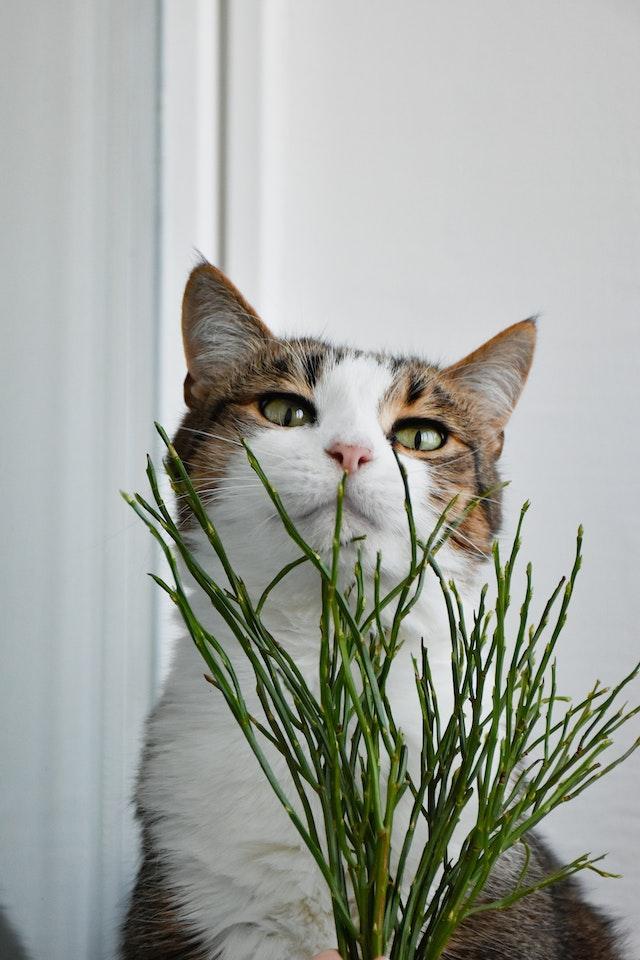
Chapter 6: Integrating Essential Oils into Your Cat's Lifestyle
Welcome to Chapter 6, where we'll explore practical tips for incorporating essential oils into your cat's lifestyle. By following these guidelines, you can ensure a safe and enriching experience for your feline companion. Let's delve into the world of essential oils and discover how to seamlessly integrate them into your cat's care routine!
6.1 Choosing High-Quality
Essential Oils Selecting high-quality essential oils is paramount to ensure their effectiveness and safety Look for oils that are 100% pure, therapeutic grade, and sourced from reputable suppliers. Organic options are preferable, as they are free from pesticides and other potentially harmful substances. Checking for third-party testing and certifications can also provide assurance of the oil's quality.
6.2 Tips for Proper Storage and Shelf Life
To maintain the potency and quality of your essential oils, proper storage is crucial. Keep them in dark glass bottles, tightly sealed, and store them in a cool, dry place away from direct sunlight. Avoid exposing the oils to extreme temperatures, as they can deteriorate over time. Following these storage guidelines will help prolong the shelf life and ensure the oils retain their therapeutic properties.
6.3 Incorporating Essential Oils into Daily Routines
Integrating essential oils into your cat's daily routines can be a wonderful way to enhance their well-being. For example, you can add a few drops of calming essential oils, such as lavender or chamomile, to their bedding or create a relaxing atmosphere during their nap time. You can also use essential oils during grooming sessions by adding a diluted blend to a grooming spray or gently massaging it onto their fur Tailor the use of essential oils to your cat's preferences and monitor their response to ensure a positive experience.
6.4 Supplementing Veterinary Care with Essential Oils
While essential oils can provide support, they should not replace professional veterinary care. Essential oils can complement veterinary treatments, but it's important to consult with your veterinarian for guidance on specific health concerns. They can offer insights on appropriate oils, dilutions, and application methods that align with your cat's individual needs. Working in partnership with your veterinarian ensures a holistic and well-rounded approach to your cat's care.
6.5 Consulting Professionals for Guidance
When in doubt or if you have specific concerns regarding essential oil usage with your cat, don't hesitate to seek guidance from professionals. Certified aromatherapists or veterinarians with knowledge of essential oil usage can provide personalized advice based on your cat's health, temperament, and specific requirements. Their expertise can help you navigate the world of essential oils with confidence and ensure the well-being of your feline friend.
Chapter 7: Essential Oils That Are Toxic to Cats

Welcome to this important chapter where we'll discuss essential oils that are toxic to our beloved feline friends. While essential oils have numerous benefits, it's crucial to be aware of oils that can pose a risk to your cat's health. By understanding these toxic oils, we can take the necessary precautions to keep our furry companions safe. Let's explore this topic together!
Tea Tree Oil: Tea tree oil, derived from the Melaleuca alternifolia plant, is toxic to cats. It contains compounds called terpenes, specifically 1,8-cineole and terpinen-4-ol, which can be harmful to their delicate systems. Ingestion or even topical exposure to tea tree oil can lead to symptoms such as weakness, tremors, difficulty walking, vomiting, and even liver damage. It's essential to keep products containing tea tree oil, such as cleaning solutions or personal care items, away from cats.
Pennyroyal Oil: Pennyroyal oil, extracted from the Mentha pulegium plant, is highly toxic to cats. It contains a compound called pulegone, which can cause liver failure and other serious health issues. Even small amounts of pennyroyal oil can be detrimental to a cat's well-being. It's crucial to avoid any products or formulations containing pennyroyal oil, as they can be life-threatening to cats. Cinnamon Oil: Cinnamon oil, derived from the Cinnamomum verum or Cinnamomum cassia tree bark, contains compounds such as cinnamaldehyde. These compounds can irritate a cat's skin, mucous membranes, and gastrointestinal tract. Ingesting or direct contact with cinnamon oil can cause symptoms like drooling, vomiting, diarrhea, breathing difficulties, and even liver damage. It's important to keep cinnamon oil and cinnamon-based products away from cats.
Clove Oil: Clove oil, obtained from the Syzygium aromaticum plant, is highly toxic to cats. It contains a compound called eugenol, which can cause severe health issues. Ingestion or even contact with clove oil can lead to symptoms such as difficulty breathing, liver damage, gastrointestinal upset, and weakness. It's crucial to keep products containing clove oil, such as dental care solutions or aromatic blends, out of reach of cats.
Citrus Oils: Citrus oils, including lemon, orange, grapefruit, and lime oils, contain compounds called limonene and linalool. These compounds can cause gastrointestinal upset and even central nervous system depression in cats. Ingestion or direct contact with citrus oils can result in symptoms like drooling, vomiting, diarrhea, and changes in behavior. It's important to avoid using citrus oils in any form around cats, including diffusing or applying them topically.
*Important Note: While citrus oils can be problematic for cats, citronella oil, derived from a different plant species, is not classified as citrus oil. Citronella oil should still be used with caution around cats due to their sensitivity to essential oils in general, but it is
not specifically associated with the gastrointestinal and central nervous system effects mentioned for citrus oils.
Chapter 8: Essential Oil Recipes for Cat Wellness
Welcome to Chapter 8, where we'll explore a collection of essential oil recipes specifically formulated to support the wellness of our feline companions. These recipes are carefully crafted to address common cat ailments and promote their overall health. Let's dive into the aromatic world of essential oil blends for cats!
Calming Blend for Anxiety Relief
Is your cat experiencing anxiety or stress? Try this calming blend to create a soothing environment:
Ingredients:
● 3 drops of lavender essential oil
● 2 drops of Roman chamomile essential oil
● 1 drop of frankincense essential oil
● 1 tablespoon of carrier oil (such as fractionated coconut oil)
Instructions:
In a small glass bottle, combine the essential oils with the carrier oil.
Gently shake or roll the bottle to mix the oils thoroughly.
Apply a small amount of the blend to your palms and rub them together
Stroke your cat's fur with your hands, allowing them to inhale the calming aroma.
Remember to observe your cat's response and adjust the dilution or frequency of use as needed. This blend can be used during stressful situations or incorporated into your cat's daily routine to promote a sense of calm.
Respiratory Support Blend for Congestion
Relief If your cat is experiencing respiratory congestion, this blend can provide relief and support their respiratory health:
Ingredients:
● 2 drops of eucalyptus essential oil
● 2 drops of cedarwood essential oil
● 1 drop of lemon essential oil
● 1 tablespoon of carrier oil (such as sweet almond oil)
Instructions:
Mix the essential oils and carrier oil in a glass bottle, ensuring they are well blended.
Apply a small amount of the blend to your fingertips.
Gently massage the blend onto your cat's chest or back, focusing on the area near the lungs.
Allow your cat to inhale the aroma as you massage the blend into their fur
This respiratory support blend can help ease congestion and promote healthy breathing. Be mindful of your cat's comfort and discontinue use if any adverse reactions occur.
Skin Soothing Blend for Irritated Skin
If your cat has irritated or itchy skin, this blend can provide relief and support skin health:
Ingredients:
● 2 drops of lavender essential oil
● 2 drops of chamomile essential oil
● 1 drop of helichrysum essential oil
● 1 tablespoon of aloe vera gel
Instructions:
In a small bowl, combine the essential oils with the aloe vera gel. Stir the mixture until the ingredients are well incorporated. Apply a small amount of the blend to the affected area on your cat's skin. Gently massage the blend into the skin, focusing on the irritated areas.
This skin soothing blend can help calm and nourish your cat's skin. Monitor their response and discontinue use if any discomfort or adverse reactions occur
Please note that these recipes are intended for external use on cats. Avoid direct ingestion or applying these blends near the eyes, ears, or sensitive areas. Always dilute essential oils properly and consider your cat's individual sensitivities and preferences.
Chapter 9 - Common Questions and Answers on Using Essential Oils with Cats
Can I use any essential oil on my cat?
Not all essential oils are safe for cats. Some essential oils can be toxic or cause adverse reactions. It's important to choose cat-safe essential oils and consult with a veterinarian experienced in essential oil usage for cats.
How do I know if my cat is sensitive to essential oils?
Cats can have varying sensitivities to essential oils. It's best to start with low dilutions and observe your cat's response. Look for signs of discomfort, excessive grooming,
changes in behavior, or respiratory distress. If any negative reactions occur, discontinue use immediately
How should I dilute essential oils for my cat?
Essential oils should always be diluted before use on or around cats. A safe dilution ratio is typically 1-2 drops of essential oil per ounce of carrier oil or another dilution medium. Proper dilution helps minimize the risk of skin irritation or other adverse effects.
Can I use essential oils to help my cat relax?
Yes, some essential oils can have calming properties. Oils like lavender or chamomile, when properly diluted and introduced gradually, may create a soothing environment for your cat. However, every cat is unique, so it's important to monitor their response and adjust accordingly.
Can I use essential oils to treat my cat's medical condition?
Essential oils should not replace professional veterinary care. While essential oils can offer support, it's essential to consult with a veterinarian for guidance on using essential oils for specific medical conditions. They can provide personalized advice based on your cat's health needs.
How should I store essential oils to maintain their potency?
To maintain the potency of essential oils, store them in dark glass bottles, tightly sealed, and in a cool, dry place away from direct sunlight. Extreme temperatures can deteriorate the oils, so it's best to store them in a moderate environment.
Can I diffuse essential oils around my cat?
Yes, you can diffuse essential oils around your cat, but it's important to use a diffuser specifically designed for pets. Choose cat-safe oils and ensure that the aroma is not overwhelming for your cat. Also, provide your cat with the option to move away from the diffuser if they desire.
Are there any essential oils I should never use on my cat?
Yes, there are essential oils that are toxic to cats and should be strictly avoided. Examples include tea tree oil, pennyroyal oil, cinnamon oil, clove oil, and citrus oils. It's crucial to familiarize yourself with the list of toxic essential oils and keep them away from your cat.
Conclusion:
Congratulations on completing this journey through the world of essential oils for cats! I hope this book has provided you with valuable insights, practical tips, and a deeper understanding of how essential oils can enhance your feline friend's well-being. As you incorporate essential oils into your cat's care routine, always remember to prioritize their safety, comfort, and individual needs.
Throughout the chapters, we explored the healing power of essential oils, their potential benefits for common feline ailments, and various techniques for using them safely. From creating a safe environment and managing odors to supporting respiratory health and promoting a shiny coat, essential oils can play a valuable role in your cat's overall wellness.
We also discussed the importance of being mindful of essential oils that are toxic to cats. Tea tree oil, pennyroyal oil, cinnamon oil, clove oil, and citrus oils are just a few examples of oils that should be avoided. By being aware of these risks, we can prevent potential harm and ensure the well-being of our beloved companions.
Remember, essential oils should never replace professional veterinary care. If you have any concerns about your cat's health or if you're considering using essential oils for specific conditions, it's always best to consult with a veterinarian experienced in
essential oil usage with animals. Their expertise will guide you in making informed decisions tailored to your cat's unique needs.
As you continue your journey with essential oils and your feline companion, we encourage you to observe and listen to your cat. Each cat is an individual with their own preferences and sensitivities. Pay attention to their reactions, adjust dilutions and applications accordingly, and always prioritize their comfort and well-being.
I hope this book has empowered you to create a harmonious and aromatic environment that enhances your cat's health and happiness. By incorporating essential oils safely and thoughtfully, you can deepen the bond with your feline friend and provide them with holistic support.
Wishing you and your beloved cat many delightful and aromatic moments together May your journey with essential oils be filled with joy, well-being, and countless purrs of contentment!
With warm regards,
Kristina GrantReferences:
"Essential Oils and Cats: A Potentially Toxic Combination" by the American Society for the Prevention of Cruelty to Animals (ASPCA) provides detailed information on essential oils toxic to cats. [Link:
https://www.aspca.org/news/essential-oils-and-cats-potentially-toxic-combination]
"Essential Oils and Cats: What You Need to Know" by the International Cat Care offers
insights into toxic essential oils and their effects on cats. [Link: https://icatcare.org/advice/essential-oils-and-cats-what-you-need-know/]
"Essential Oil Safety for Cats" by the Tisserand Institute provides detailed information on safe essential oil usage with cats. [Link: https://tisserandinstitute.org/safety/essential-oils-and-cats/]
The "Animal Desk Reference" by Melissa Shelton, DVM, offers insights on using essential oils for animals, including cats. [Link: https://www.animaleo.info/animal-desk-reference.html]
Glossary of Essential Oil Terms
Essential Oil: Highly concentrated aromatic compounds derived from plants through various extraction methods. They capture the natural fragrance and therapeutic properties of the plant.
Dilution: The process of combining essential oils with a carrier oil or dilution medium to reduce their concentration before use. This ensures safe and proper application.
Carrier Oil: A neutral, plant-based oil used to dilute essential oils. Common carrier oils include coconut oil, almond oil, and jojoba oil.
Aromatherapy: The practice of using essential oils for their therapeutic benefits, often through inhalation or topical application, to promote physical, mental, and emotional well-being.
Diffuser: A device used to disperse essential oils into the air, creating a fragrant and therapeutic atmosphere.
Terpenes: Organic compounds found in essential oils that contribute to their aroma and potential therapeutic effects.
Distillation: The process of extracting essential oils through steam distillation, which involves passing steam through the plant material to release and collect aromatic compounds.
Topical Application: Apply essential oils diluted in carrier oil directly onto the skin. It allows for localized effects and absorption of the oil's beneficial properties.
Inhalation: The method of breathing in essential oils through diffusion, steam inhalation, or direct inhalation. Inhalation allows the aroma and beneficial compounds to interact with the respiratory system and olfactory receptors.
Patch Test: A small application of diluted essential oil on a small area of the skin to check for any adverse reactions or sensitivity before using it more extensively.
Phenols: A class of chemical compounds found in some essential oils. They can have antiseptic properties but may be irritating or toxic to cats.
Toxicity: The potential harm or adverse effects caused by the ingestion, inhalation, or contact with substances, including certain essential oils, that can be harmful to cats.
Pet-Safe Formulations: Essential oil products are specifically formulated for safe use with pets, considering their unique sensitivities and physiological differences.
Vetiver: An essential oil derived from the roots of the Vetiveria zizanioides plant, known for its calming and grounding properties.
Citronella: An essential oil obtained from the leaves and stems of the Cymbopogon genus of plants. It is commonly used as an insect repellent.
Limonene: A naturally occurring compound found in citrus essential oils, known for its uplifting aroma and potential benefits.
